Finger tattoos, also known as “ring tattoos” or “fingerprint tattoos,” are an increasingly popular form of body art. It’s no surprise – this type of tattoo is stylish and eye-catching, making it a statement piece that stands out from regular full-arm sleeves and other more common kinds of ink jobs. But you may be wondering how long such a delicate part of the body can hold its color over time – after all, fingers don’t exactly have big veins guaranteeing ample blood flow for absorbing pigment. Fear not; in this blog post, we’ll answer your questions on finger tattoo lasting power and help you decide whether they’re worth the risk!
Why are Finger Tattoos so popular?
Finger tattoos have gained popularity for a variety of reasons. One of the key factors is their distinctive aesthetic appeal. Unlike typical tattoo locations, the fingers offer a more visible and personal canvas for expressing one’s individuality and style. They serve as an immediate statement, drawing attention and sparking conversations.
Finger tattoos also offer an element of versatility. Due to the limited space, these tattoos typically feature simple and minimalist designs, which have become a trend in recent years. These smaller designs allow the wearer to alter and add to their body art over time, providing an evolving representation of their journey and experiences.
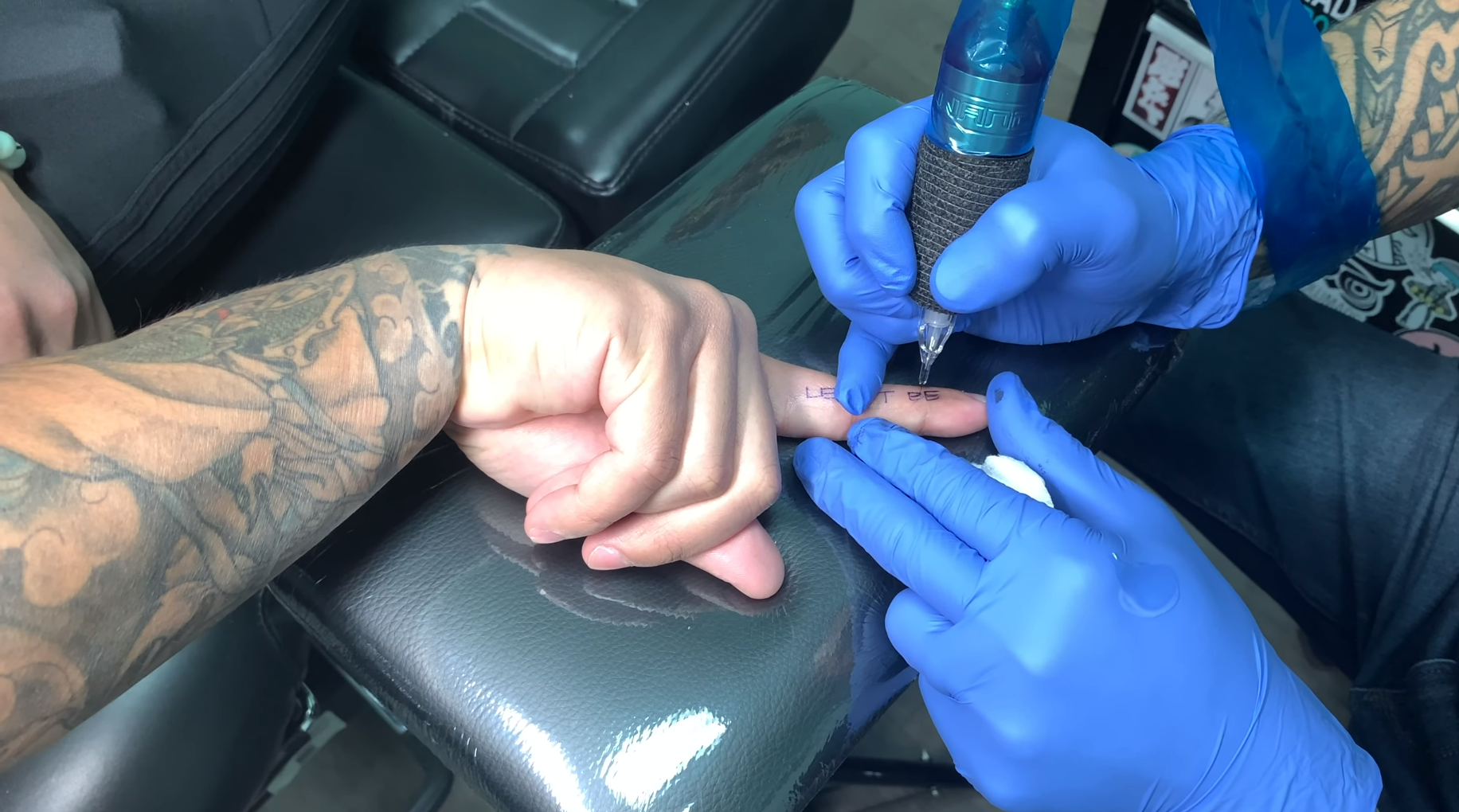
Finger Tattoos – Duration and Fading
Finger tattoos, like all tattoos, are designed to be permanent and will last a lifetime under optimal conditions. However, due to the unique nature of the skin on the fingers and the high amount of friction they are subject to, these tattoos tend to fade faster than those on other parts of the body.
The process of fading is natural and can be accelerated by factors such as sun exposure, the quality of the ink used, and the expertise of the tattoo artist. [1] Finger tattoos are particularly susceptible to sun damage, which can lead to the ink breaking down and the tattoo fading over time. Moreover, the skin on the fingers regenerates faster than other parts of the body, which can also contribute to faster fading.
It’s also worth mentioning that fingers are a part of our bodies that we wash and use extensively throughout the day. This continuous exposure to water, soap, and other chemicals can lead to faster wear and tear of the tattoo, causing it to fade.
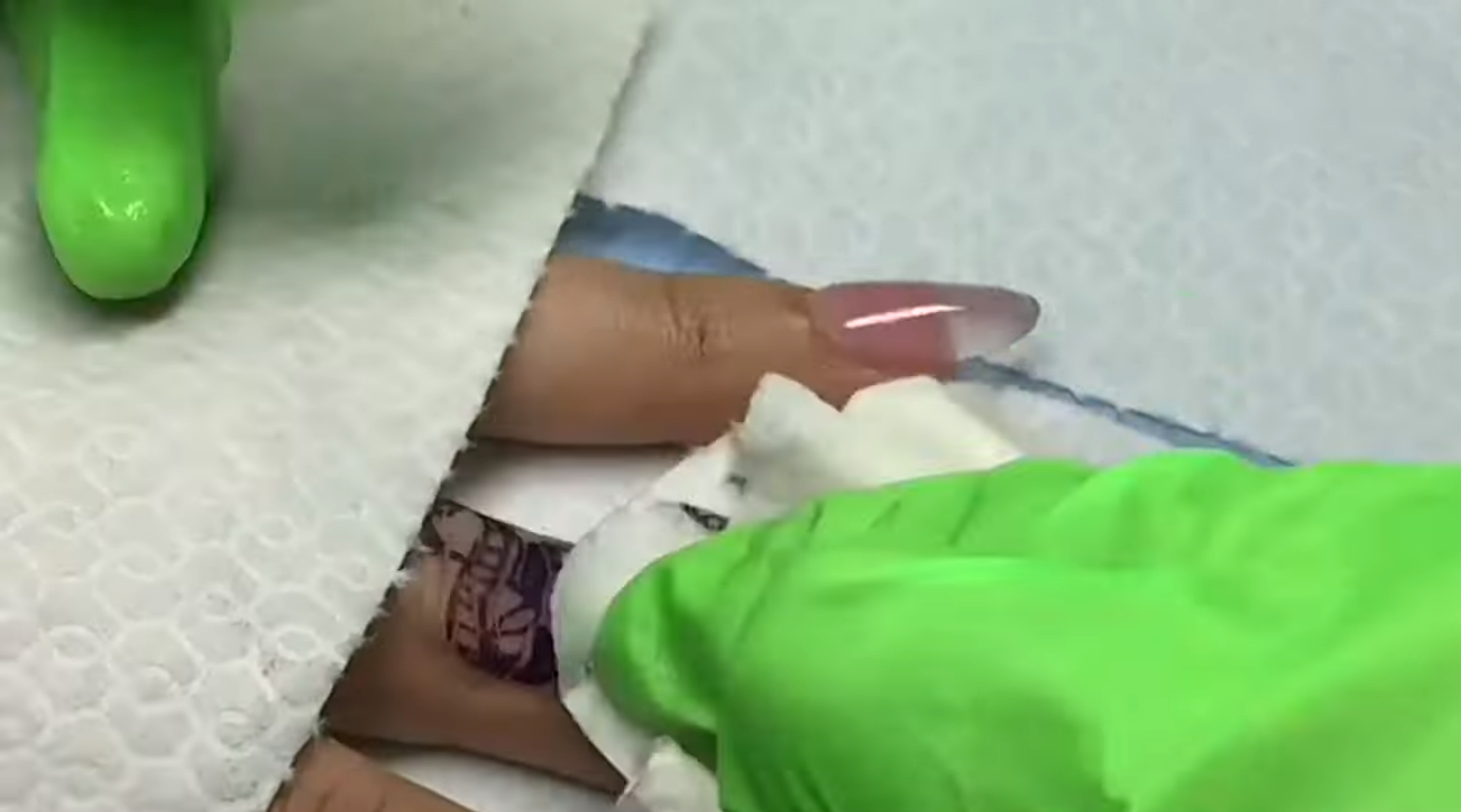
Factors Influencing Finger Tattoo Longevity
There are several factors that influence the longevity of a finger tattoo. Understanding each factor will help you make informed decisions in your tattoo journey.
- Skin Type: The type of your skin plays a crucial role in determining the longevity of your finger tattoo. Some people have skin that retains tattoo ink better than others. If your skin is oily or sheds quickly, it may not hold the ink as effectively, leading to a faded tattoo.
- Ink Quality: The quality of the ink used in the tattooing process significantly influences how long the tattoo will last. High-quality inks tend to last longer, maintaining their vibrancy even with exposure to external elements and the passage of time.
- Tattoo Artist’s Skill: The skill and expertise of your tattoo artist can make a huge difference in the longevity of your tattoo. An experienced artist will know the right depth to inject the ink, which is critical in ensuring the tattoo doesn’t fade quickly.
- Sun Exposure: Direct exposure to sunlight can cause your finger tattoo to fade faster. The ultraviolet rays in sunlight can break down the tattoo ink over time, causing the colors to fade.
- Care and Maintenance: Taking good care of your finger tattoo, especially in the early stages, can significantly extend its lifespan. This includes keeping it clean, moisturized, and protected from excessive sun exposure.
- Regular Touch-ups: Even with the best care and maintenance, finger tattoos will fade over time. Regular touch-ups can help maintain the vibrancy and clarity of your finger tattoo.
- Lifestyle Factors: Certain lifestyle factors, such as how often you wash your hands, the type of work you do, and how much your hands sweat, can also impact the longevity of your finger tattoo. [2]
Signs of Fading Finger Tattoos
Fading in finger tattoos is a gradual process, and recognizing the early signs can be crucial for timely intervention and touch-ups. Here are some signs indicating that your finger tattoo is starting to fade:
- Color Loss: One of the most common and noticeable signs of a fading tattoo is a significant loss of color. If the once vibrant colors of your tattoo appear dull, it could be a sign that your tattoo is starting to fade.
- Blurred Edges: As a tattoo fades, the sharp lines and edges can start to blur. This is particularly noticeable in tattoos with intricate designs or lettering.
- Ink Spreading: Over time, the ink in your tattoo might start to spread, causing the design to lose its original shape. This is often observed as a form of smudged appearance.
- Ink Lightening: If you notice that the black or darker shades in your tattoo are becoming lighter, it’s a clear sign of the tattoo fading.
- Skin Visibility: In a fresh tattoo, the skin is usually not visible through the ink. However, as the tattoo starts to fade, you may start to see your skin showing through.
- Patchiness: In some cases, tattoos may fade unevenly, resulting in a patchy appearance.
- Raised Texture: A raised texture in the tattooed area could also be a sign of a fading tattoo.
How Fading Progresses
- Initial Fading (First Few Weeks): In the initial stages post-application, the tattoo may appear exceptionally vibrant. This is due to the ink still being very fresh and the skin healing, which temporarily enhances the color. However, as the skin completes healing and the excess ink is exfoliated, you might notice the colors slightly toning down. This is normal and shouldn’t be confused with fading.
- Stabilization Phase (1-6 Months): Post the initial fading, your tattoo enters a stabilization phase. During this time, the color of your tattoo should remain relatively stable. The ink has settled into the dermis, and with proper aftercare, significant color changes are unlikely.
- Gradual Lightening (6 Months – Several Years): This stage is characterized by a slow, gradual lightening of colors, especially if the tattoo is frequently exposed to sun or abrasive chemicals. Regular moisturization and sun protection can help slow down the lightening process.
- Significant Fading (Several Years and Beyond): Over several years, the tattoo ink begins to fade more noticeably, primarily due to the body’s natural exfoliation process and external factors like sun exposure. The colors might appear significantly less vibrant, and the outlines may start to blur. At this stage, a touch-up is often beneficial to restore the tattoo’s original vibrancy.
Differences in Fading Patterns
Tattoos on different parts of the body can fade at varying rates and in different ways due to several factors.
- Location on the Body: The location of your tattoo significantly impacts the rate of fading. Tattoos on areas with thin skin, such as the fingers, tend to fade faster due to the constant shedding of skin cells. Similarly, tattoos on body parts that are frequently exposed to the sun, like the arms or neck, are likely to fade quickly due to UV exposure.
- Color of the Ink: Different colors fade at different rates. Black and gray, being the darkest colors, tend to resist fading the longest. On the other end of the spectrum, brighter colors like yellow or pink are more prone to swift fading.
- Depth and Density of the Ink: Tattoos with deeply injected and dense ink tend to fade slower than those with more superficially placed or less dense ink. This is because deeper layers of skin exfoliate and renew less frequently than the upper layers.
- Individual’s Skin Type: Every person’s skin is unique, and it reacts differently to tattoo ink. Those with oily skin may experience faster fading as the excess oil can dilute the ink over time. Dry skin can also contribute to faster fading due to increased skin cell exfoliation.
- Aftercare and Lifestyle Habits: The way you care for your tattoo after getting it, as well as your lifestyle habits, play a crucial role in the fading pattern. Tattoos on individuals who regularly moisturize their skin and protect it from the sun will fade slower than those who neglect aftercare. Similarly, habits such as smoking can hasten the fading process.
When to Consider Touch-Ups
Deciding when to consider a tattoo touch-up depends largely on personal preference. Some people prefer to get touch-ups as soon as they notice any signs of fading, while others may wait until the tattoo has significantly faded. It’s generally advisable to get a touch-up when the color has noticeably lightened or the outlines have started to blur.
However, touch-ups should be done by a professional tattoo artist to ensure the best results and avoid any potential skin damage. Keep in mind that frequent touch-ups can cause skin trauma, so it’s important to allow sufficient time between touch-ups for the skin to heal properly. Ultimately, the decision to get a touch-up should be based on your satisfaction with your tattoo’s appearance.
Maintaining Finger Tattoos
Maintaining the vibrancy of finger tattoos involves a few key steps, which, when followed diligently, can significantly enhance the longevity and beauty of your ink.
Aftercare Practices
- Immediate Aftercare (Day 1 – Week 1): During the first week after getting your finger tattoo, it’s crucial to keep the area clean and moisturized. Utilize a mild, fragrance-free soap to delicately cleanse the tattooed area, and then gently pat it dry with a clean towel. Apply a thin layer of tattoo-specific moisturizer or ointment, avoiding any products that contain harsh chemicals or fragrances.
- Healing Phase (Week 1 – Month 1): As your tattoo begins to heal, it’s normal for it to start peeling or scabbing. Avoid picking at the scabs or scratching the area, as this can lead to infection or cause the ink to fade. Continue applying moisturizer regularly to keep the skin hydrated and facilitate healing.
- Protection from Sun Exposure: From the first day onward, and especially after the tattoo heals, protect your tattoo from direct sunlight. Sun exposure can lead to premature fading of the tattoo color. Using a sunscreen of at least SPF 30, whenever you’re outdoors, can help in preserving the color of your tattoo.
- Long-Term Care: Even after the tattoo has fully healed, continue to moisturize the area daily and protect it from sun exposure. Follow a healthy lifestyle, including staying hydrated and eating a balanced diet, to maintain the health of your skin and keep your tattoo looking vibrant.
Sun Protection
Sun protection is an essential aspect of tattoo care, especially for tattoos located on frequently exposed areas such as the fingers. Prolonged and unprotected exposure to ultraviolet (UV) radiation from the sun can cause your tattoo to fade prematurely, losing its vibrancy and clarity. Furthermore, UV rays can lead to skin damage, which isn’t just harmful for your tattoo, but your overall skin health.
To protect your tattoo from the sun, it is important to use a broad-spectrum sunscreen with a Sun Protection Factor (SPF) of at least 30. [3] This variety of sunscreen provides protection against both UVA and UVB rays, which are the two forms of UV radiation that can potentially harm the skin. Apply the sunscreen to your tattoo approximately 30 minutes before venturing outdoors, and remember to reapply it at least every two hours, or promptly after swimming or experiencing heavy sweating. Wearing protective clothing, such as long-sleeved shirts or gloves, can also offer additional protection for your tattoo.
Avoiding Excessive Friction
In addition to sun protection, another key factor in tattoo maintenance is avoiding excessive friction on the tattooed area. Constant friction can lead to premature fading and blur the lines and details of your tattoo. This is especially important for finger tattoos because our hands are always in use. Activities such as washing dishes, manual work, or even the constant rubbing of clothes can affect the longevity of your tattoo.
To prevent this, consider wearing protective gear like gloves when doing manual work or any activity that could cause friction on your tattoo. Additionally, try to keep the skin moisturized as dry skin can increase the risk of friction damage. Overall, be mindful of the daily activities that could induce unnecessary wear and tear on your tattoo.
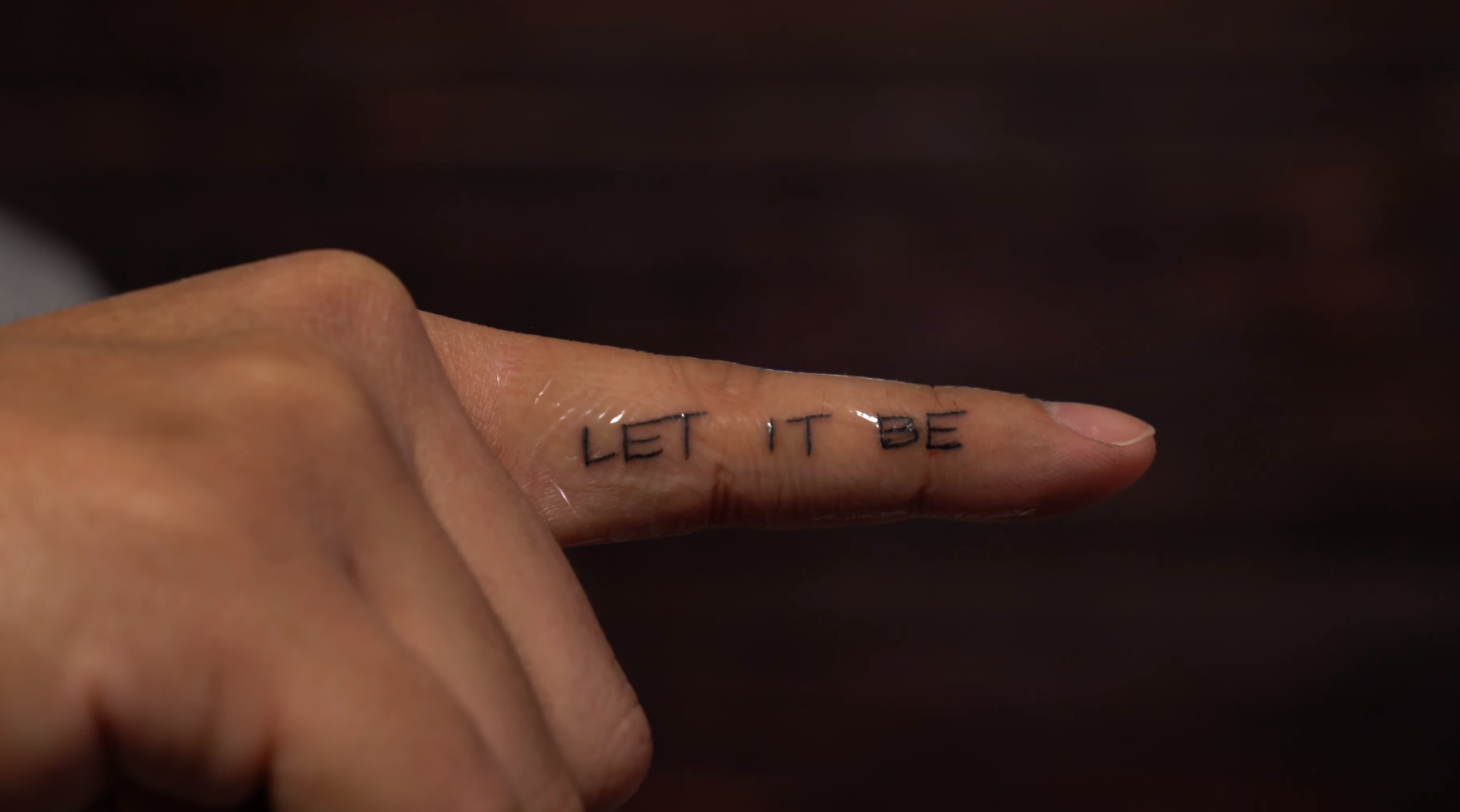
Regular Touch-Ups
Regular touch-ups are an essential part of keeping your finger tattoos vibrant and well-defined. Due to frequent hand washing, natural skin regeneration, and exposure to external elements, finger tattoos may fade faster than those in other areas. It’s recommended to get a touch-up every couple of years or when you notice the ink starting to look less vibrant.
However, the need for touch-ups can vary based on your skin type, lifestyle, the quality of the original tattoo, and how well you maintain it. Remember, each touch-up is essentially a new tattoo procedure, so the same aftercare measures should be followed to ensure optimum healing and preservation of your tattoo.
Frequently Asked Questions
Do finger tattoos fade completely?
Finger tattoos don’t typically fade completely on their own, but they can lose vibrancy or clarity over time due to various factors such as sun exposure, friction, and the natural regeneration of skin cells. The rate of fading can be influenced by the quality of the tattoo, the type and color of ink used, and how well you follow aftercare and long-term care instructions. However, even with utmost care, finger tattoos usually require periodic touch-ups to maintain their appearance.
Do finger tattoos fade fast?
Yes, finger tattoos are known to fade faster than tattoos in other areas. This is primarily due to the high amount of use our hands get on a daily basis, from washing dishes to writing to manual labor. The skin on our fingers also regenerates faster, which can cause the tattoo ink to fade more quickly. Moreover, the relatively thin skin on our fingers leaves less cushion for the ink.
Are finger tattoos durable?
Finger tattoos can be durable, but they require diligent care and maintenance due to the unique challenges posed by their location. Frequent hand usage, faster skin regeneration, and constant exposure to environmental elements can affect the durability of finger tattoos. However, with consistent sun protection, avoiding excessive friction, and scheduling regular touch-ups, the longevity of your finger tattoo can be significantly extended. It’s also crucial to follow the aftercare instructions provided by your tattoo artist immediately after getting inked, as the initial healing process plays a significant role in the durability of your tattoo.
How long do simple finger tattoos last?
Simple finger tattoos can last many years, but their longevity can vary significantly based on factors like the quality of the tattoo, the type of ink used, the individual’s skin type, and their lifestyle. Typically, with proper care and regular touch-ups, a simple finger tattoo can remain vibrant for about 5-10 years. However, due to the unique challenges associated with finger tattoos – such as faster skin regeneration and constant friction – they may begin to show signs of fading sooner.
Useful Video: MY FINGER TATTOO FIVE YEARS LATER
Conclusion
In conclusion, finger tattoos, while unique and aesthetically appealing, require careful and diligent maintenance due to the unique nature of their location. Regular sun protection, avoiding excessive friction, and getting timely touch-ups are essential to prolong their vibrancy and clarity. Despite these measures, be prepared for more frequent touch-ups compared to tattoos on other parts of the body due to the high usage and faster skin regeneration on our hands. Always remember to consult with a professional tattoo artist for personalized advice on tattoo care and expectations.
References:
- https://medium.com/@anastasiiakoviazina/why-tattoo-fade-dc49d8948a06
- https://www.allure.com/story/tattoo-fading-how-to-prevent
- https://www.sweetcare.com/ua/sweet-mag/tattoos-how-can-you-take-care-them-i-1758


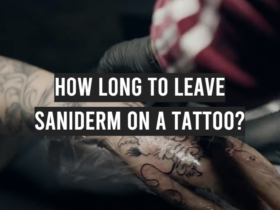
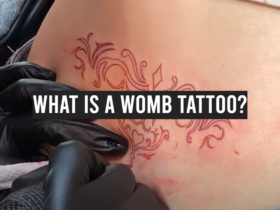

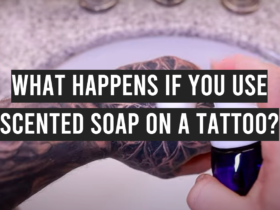
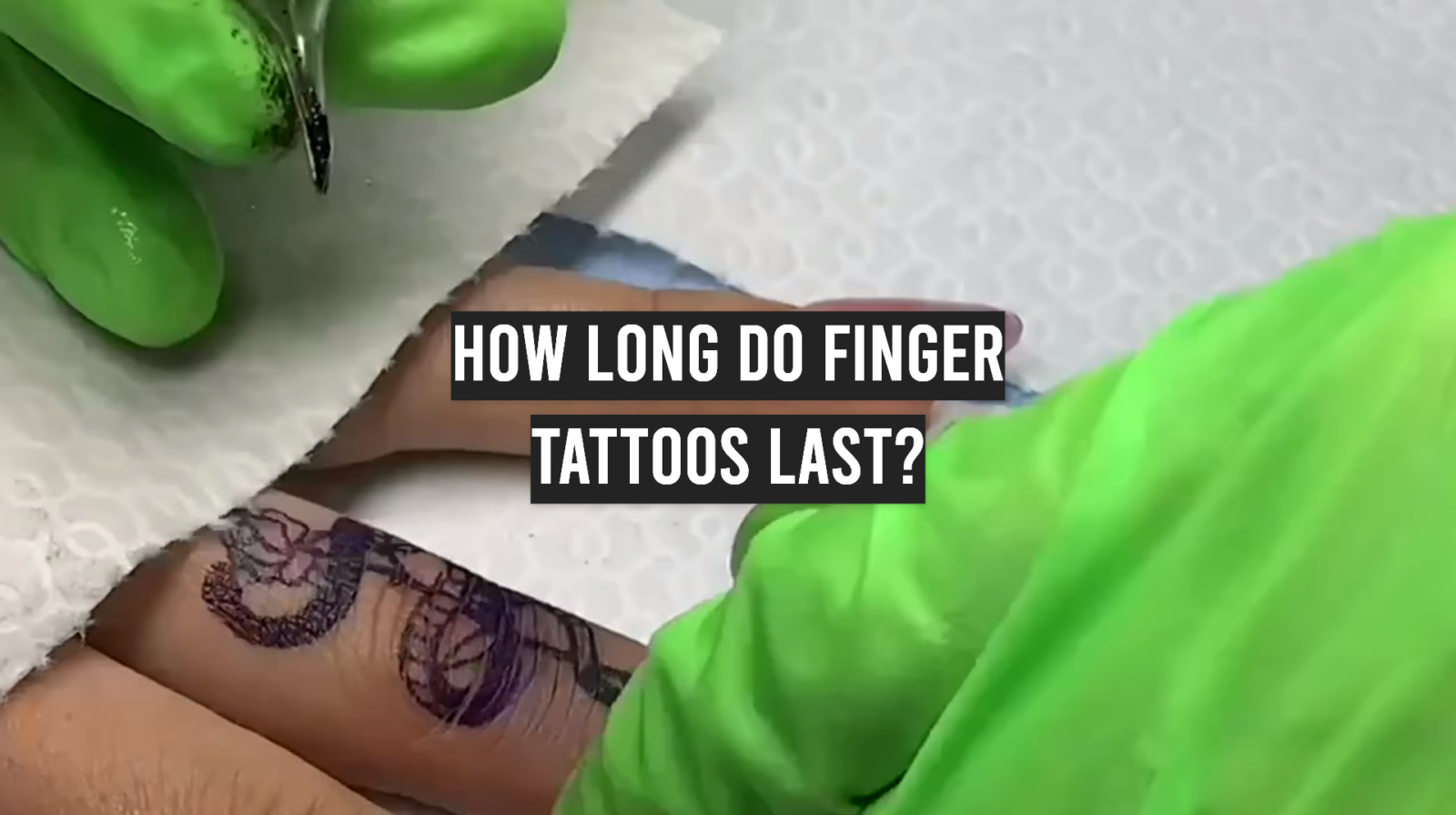
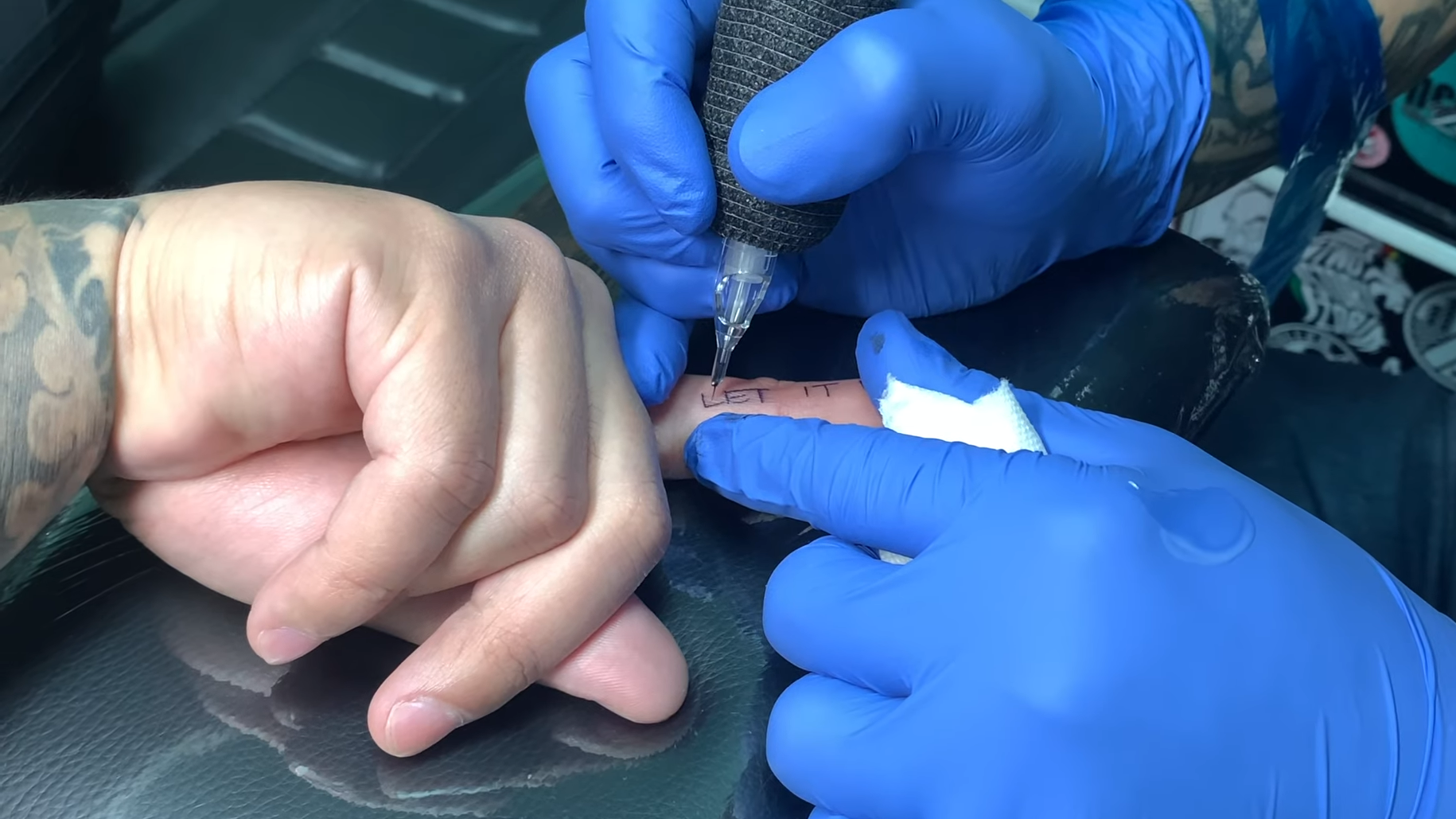
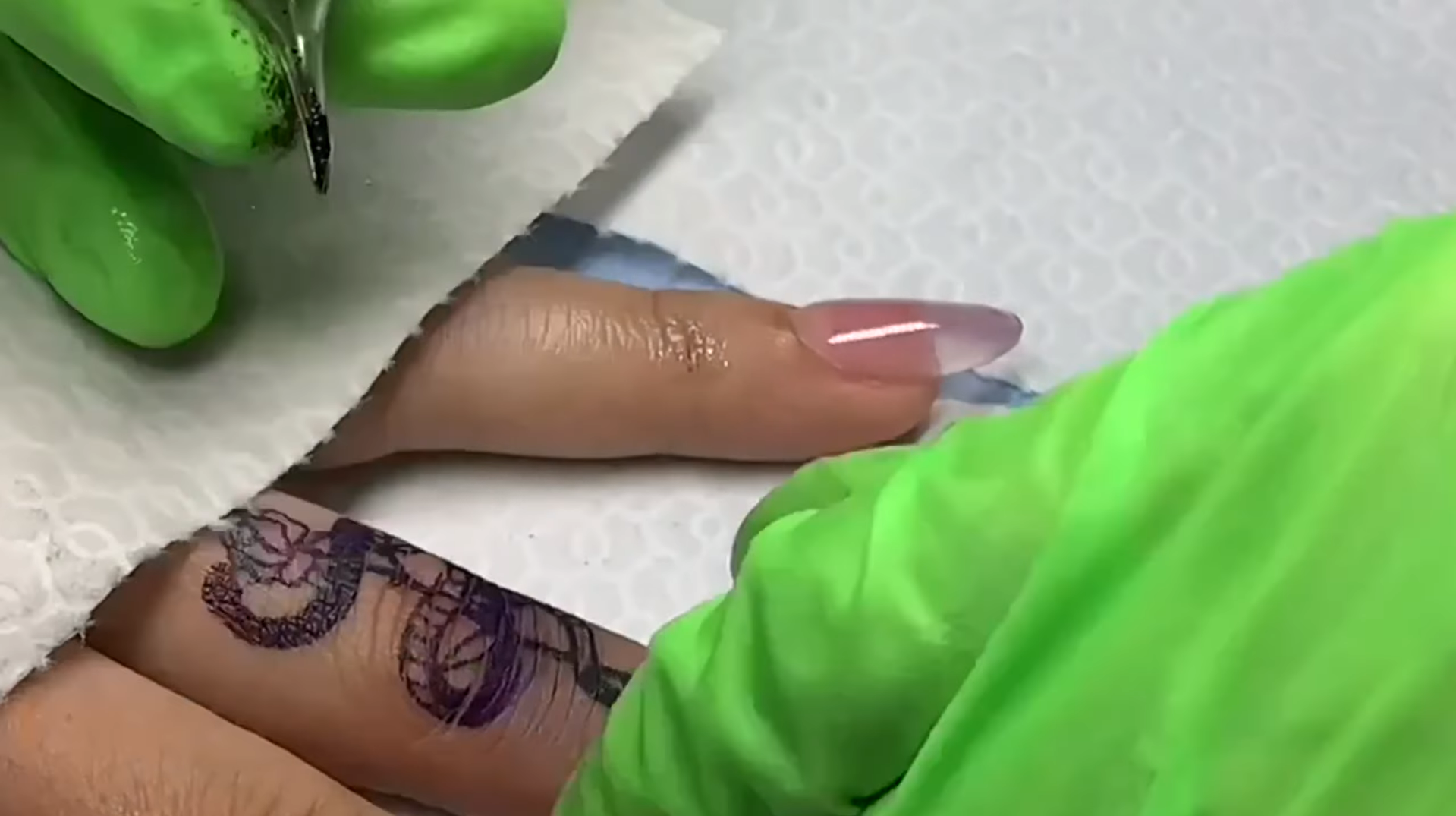
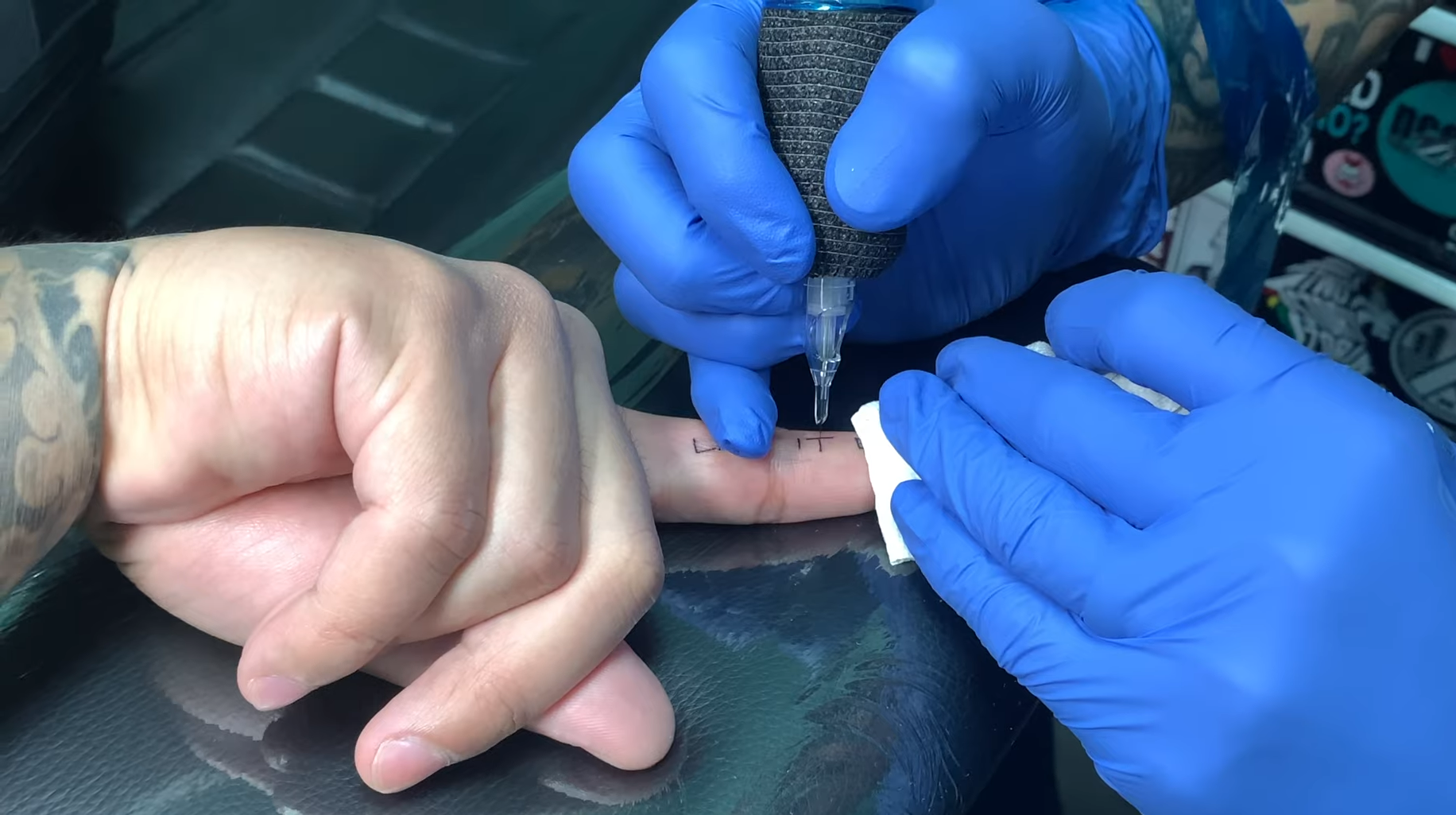
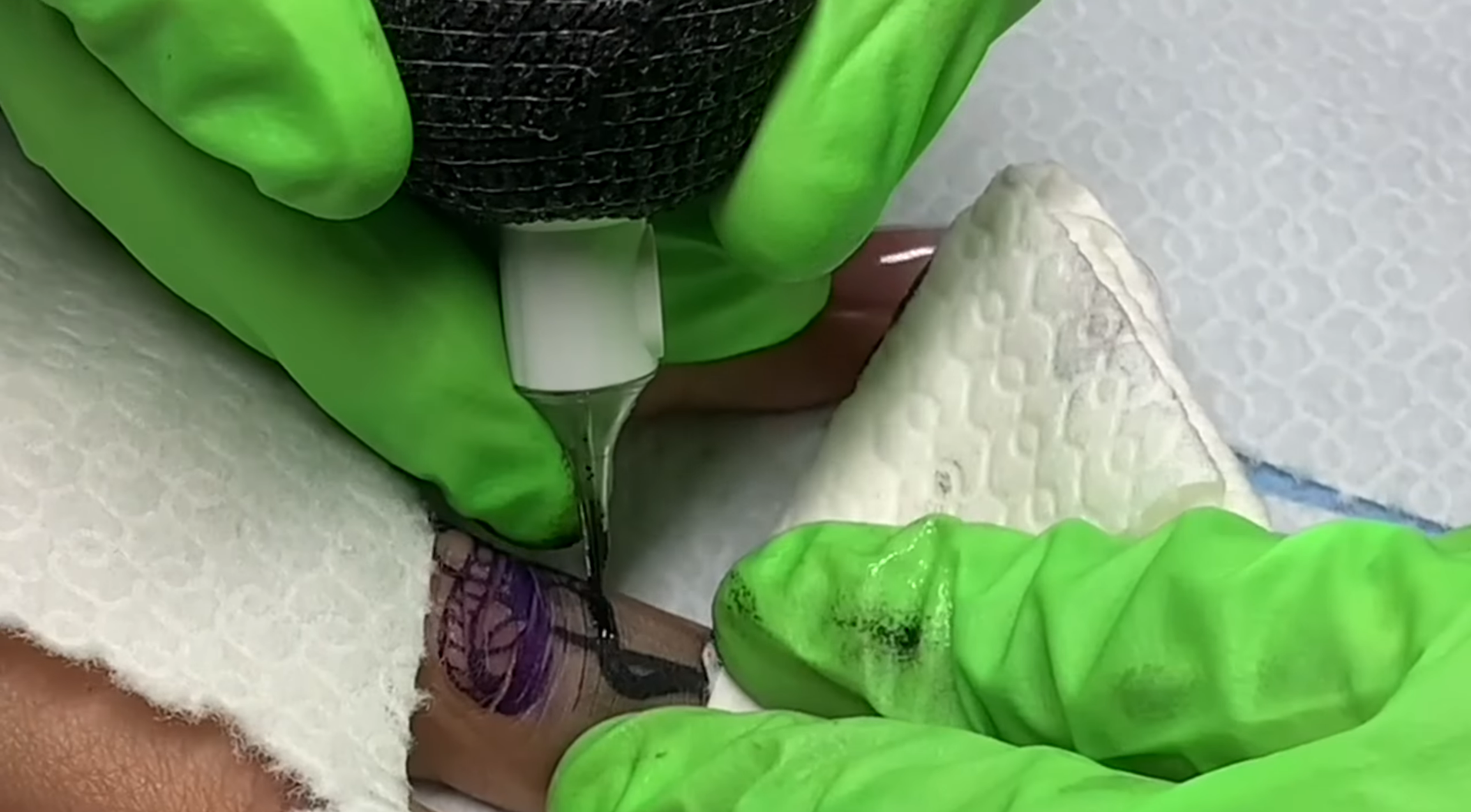

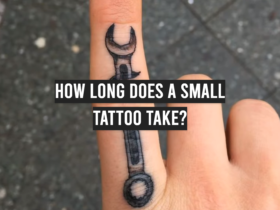
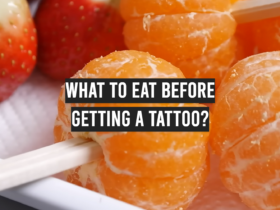
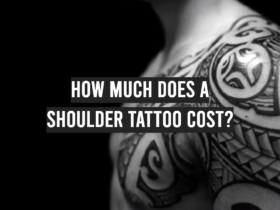
Leave a Review